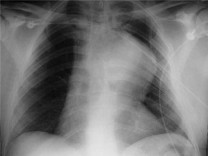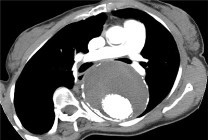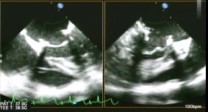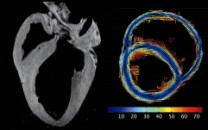Aortic Aneurysm treatment depends on the size, location and the patient's state of health.
For example, if your aneurysm is small and there are no symptoms, your doctor will probably recommend a "watch and wait" approach. Here, regular scheduled appointments are made where any changes in the aneurysm is monitored by the various imaging methods such as CT scan or MRI.
However, if the Aortic Aneurysm is large or grows more than 1 cm per year, then surgery may be recommended for you.
Aortic Surgery
There are various types of aortic surgery that are available to treat Aortic Aneurysms.
Open Abdominal or Open Chest Surgery
This is the standard surgery when the Aortic Aneurysm reaches the need for surgery. The procedure involves the replacement of the portion of the aorta that is swollen, with an artificial graft. The graft is made from a material that does not wear out and is sewn in place with a permanent suture material.
Endovascular Surgery
Compared to open surgery explained above, endovascular surgery allows for the repair of an Aortic Aneurysm with less trauma to the aorta, less blood loss, and fewer days in intensive care during recovery. Although it usually benefits those who are at high risk of complications during surgery, it may not be suitable for every person. Your doctor will be able to decide if this form of surgery is the better option for you.
During the procedure, a thin tube (or catheter) is inserted into the blood vessel via an artery in the leg. Attached to the catheter is a graft that is placed where the aneurysm is located using X-ray guidance. Once in place, the graft is expanded. The metal frame of the graft expands like a spring which serves to hold up the walls of the aorta. This graft reinforces the area of the weakened artery wall and prevents the risk of subsequent rupture of the aneurysm. The blood flow is directed away from the aneurysm and flows through the graft instead.
Hybrid Elephant Trunk Procedure
This procedure is done in patients with large Aortic Aneurysms located in various sections of the aorta. It is a more complex procedure that involves two stages.
How should you prepare for the surgery?
- Let your doctor know beforehand what medications you are on as some of these medications may have to be stopped before the surgery.
- Smokers need to stop smoking before the procedure.
- Give your doctor your medical history, especially if you have any allergies.
- You will be informed if you would need to undergo other tests prior to surgery, some tests you will need are:
- Electrocardiogram (ECG)
- Blood tests
- Chest X-ray
- Urine sample
- Your doctor will explain the details of the procedure to you and answer your questions should you have any.
What happens before the surgery?
- Do not eat or drink for 6-8 hours
- You will be asked to sign a consent form.
- On the morning of the surgery, you will be asked to remove all jewellery, dentures and undergarments.
- Empty your bladder before the preoperative medication is given, which is to help you relax.
What happens during the surgery?
- You will be given anaesthesia after entering the operating theatre.
- An incision will be made down the middle of the chest.
- Your breastbone will be separated to allow the surgeon to examine your heart.
- Your heart will be connected to the heart-lung bypass machine. This machine supplies oxygen to your blood and pumps it back to the rest of your body.
- The aortic surgery will then begin.
- The aorta will be gently opened to reveal your aortic valve.
- The replacement valve will be sewn in place after the old valve is removed.
- After the aorta has been closed with stitches, you will slowly be removed from the heart-lung bypass machine after your heart regains strength.
What are the potential risks of this surgery?
Minor complications include:
- Nausea and vomiting
- Infection at the operated site
- Minor bleeding
- Allergic reactions to the plaster or certain medications
Major complications include:
- More severe infection
- Bleeding during or after the surgery
- Heart attack
- Stroke
Although no surgery or procedure is risk free, aortic surgeries have been performed for many years with good results and limited complications. Your doctor, prior to you giving consent for the surgery, will explain these and other risks in detail.
What happens after the surgery?
- Immediately after the surgery, you will be sent to the Intensive Care Unit (ICU), where you will be taken care of for several days or as long as it is needed, until you are stable enough to be transferred to the ward.
- In an ICU, your heart rate, blood pressure and breathing will be monitored continuously.
- Physical therapy will start as soon as possible to allow for a faster recovery. For example, you will learn how to move your upper arms without hurting your breastbone while it heals.
- You may also receive counselling on how to live a healthier lifestyle.
Going home
- Have a relative or friend pick you up on the day of your discharge from the hospital.
- If you live alone, you may want to think about having someone to help you with some of your daily activities until you have completely healed.
- Ensure that you remember your follow-up appointments with your doctor and make sure that you take any medications given to you on discharge.






















